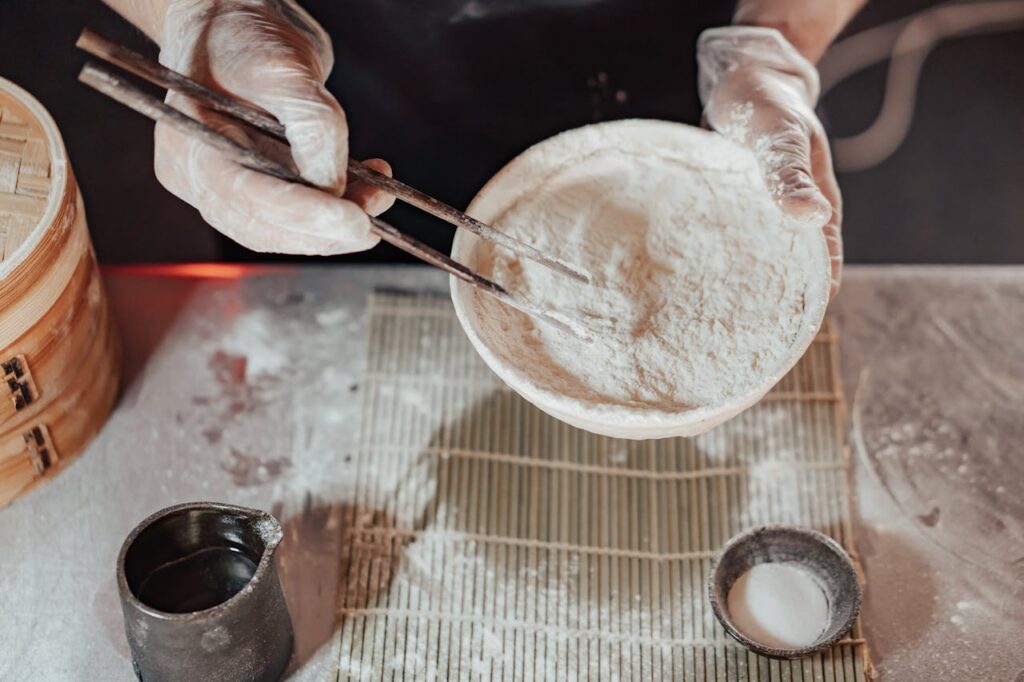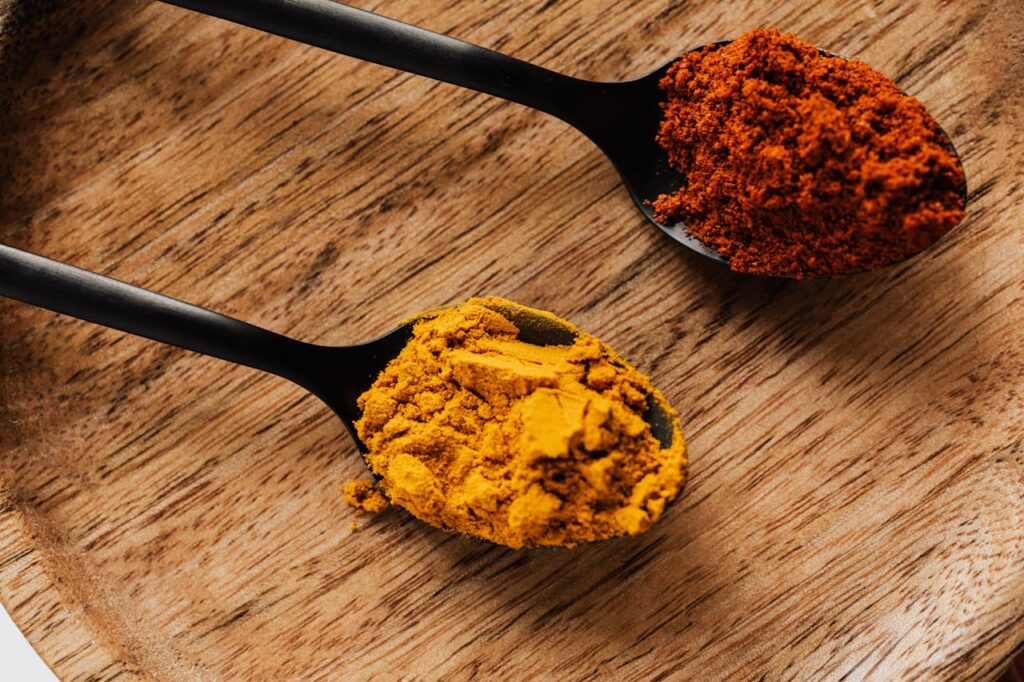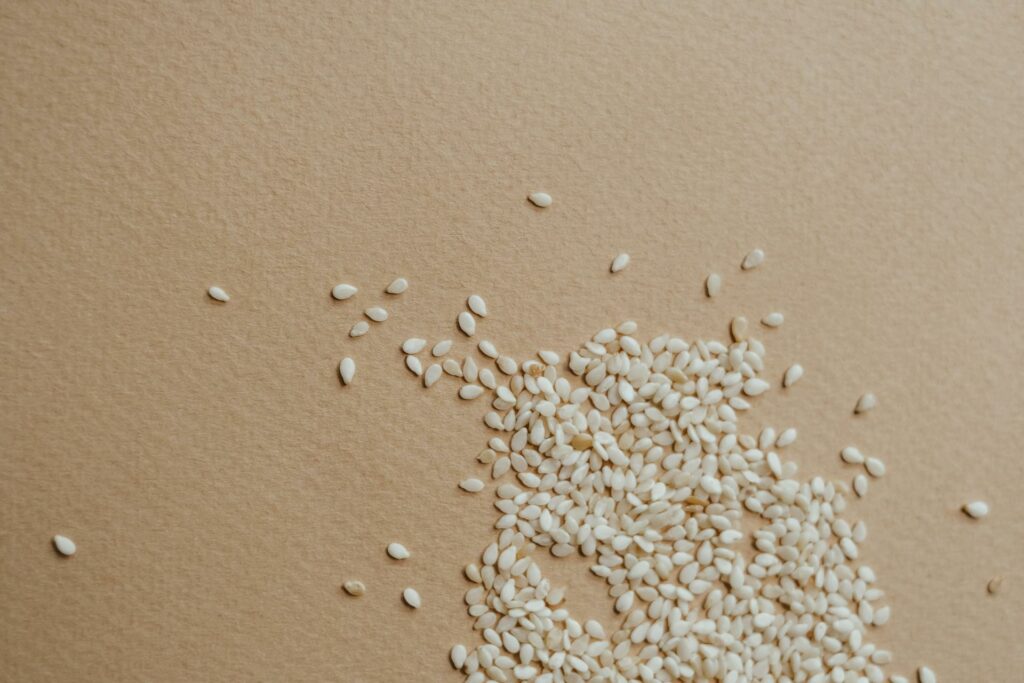Ethylene oxide (ETO) is a chemical contaminant under high surveillance in the food, cosmetics, and pharmaceutical industries. Used in some countries as a sterilizing agent, it is now strictly banned in the European Union due to its proven toxic effects on human health. However, residues of this substance continue to be detected in imported products, exposing manufacturers to major regulatory and health risks. To address these challenges, specific analyses are available, such as ethylene oxide testing , which allows for effective product compliance monitoring. To go further, discover our laboratory chemical contaminant analysis , including regulated residues such as ethylene oxide.
This article explores in depth the properties of ethylene oxide, its uses, associated risks, and analytical methods for detecting it in products.
Table of Contents
What is ethylene oxide?
Definition and chemical characteristics
Ethylene oxide, also known as 1,2-epoxyethane or oxirane, is an organic compound with the chemical formula C₂H₄O . It is the simplest cyclic ether in the epoxide family. At room temperature, it is a colorless, highly volatile gas with a slightly ethereal odor. It has an extremely low boiling point (11 °C) and is completely miscible in water. Ethylene oxide is also very reactive: it can readily polymerize or form bonds with other organic compounds.
This gas is compressible in liquid form, but remains highly flammable with an explosive limit of between 3% and 100% by volume in air. Its flash point is -57°C, making it a high-risk substance in terms of industrial handling.
Its CAS number is 75-21-8, and it is listed in the IARC (International Agency for Research on Cancer) classification as a group 1 , i.e. proven carcinogenic to humans.
Toxicological properties
Ethylene oxide is classified as a CMR substance: carcinogenic, mutagenic and reprotoxic . It is an alkylating agent that can interact with DNA and proteins, causing cellular mutations. Several epidemiological studies have highlighted a link between exposure to ethylene oxide and an increased risk of lymphoid, stomach or breast cancers.
If inhaled, this gas can cause mucous membrane irritation, headaches, respiratory problems, and even convulsions or pulmonary edema. Cases of peripheral neuropathy, memory loss, and impaired hand-eye coordination have also been reported in occupational environments exposed to concentrations as low as 3 ppm.
Chronic exposure is of particular concern. In occupational settings, the permissible exposure limit set by OSHA (United States) is 1 ppm (8-hour time-weighted average), with a short-term exposure limit of 5 ppm over 15 minutes. Note that the olfactory detection threshold varies between 250 and 700 ppm, which means that the gas can already be toxic before it is even detectable by smell.
Presence in finished products
Ethylene oxide is considered a contaminant when present as a residue in products intended for human food, animal feed, or cosmetic use. It can also be detected as 2-chloroethanol, a by-product of its degradation or processing.
Compliance analyses take into account the sum of ethylene oxide and 2-chloroethanol , expressed as ethylene oxide equivalent. This definition is that adopted by Regulation (EC) No. 396/2005 of the European Commission.
The presence of this contaminant in finished products, even in very small quantities, can lead to the immediate withdrawal or recall of the affected batches, particularly when it comes to food, organic products or nutritional supplements.

What is ethylene oxide used for? Industrial uses and applications
Despite its well-established dangers, ethylene oxide remains used in many countries for its exceptional properties. It is a broad-spectrum compound that finds its place in several industrial sectors: food, medical, chemical, and pharmaceutical. This section explores its two main uses: as a biocidal agent and as a chemical intermediate in the synthesis of industrial products.
A powerful biocide for sterilization
Ethylene oxide is a gaseous disinfectant that is highly effective against bacteria, molds, yeasts, and spores. It is used to sterilize heat-sensitive products that cannot be autoclaved or ionized.
a) Disinfection of food and cosmetic products
Historically, ethylene oxide has been widely used to treat spices, dried plants, aromatic herbs, seeds, and nuts, particularly when exporting them from tropical regions. This process ensured the microbiological safety of batches while preserving the organoleptic properties of the food (color, taste, texture), unlike more aggressive heat treatments.
However, this practice is now banned in the European Union because ethylene oxide residues pose serious health risks. Despite this, several third countries, such as India, Canada, the United States, and Australia, continue to use this gas in post-harvest treatments.
This situation explains the numerous cases of non-compliance detected on imported products, such as in 2020, when more than 268 tonnes of sesame seeds were withdrawn from the European market after showing contamination levels 3,500 times higher than the maximum authorized limit (0.05 mg/kg). This case, relayed by the RASFF system, highlighted the extent of the use of this substance in certain exporting countries.
b) Sterilization of medical equipment
Ethylene oxide is also widely used in the medical sector for the sterilization of sensitive devices such as:
- Bandages, sutures, implants, syringes, catheters
- Pacifiers, bottles, devices for premature babies
- Surgical instruments made of plastic or silicone
It is particularly used when materials cannot withstand heat or gamma rays. This sterilization method is governed by strict standards, such as the NF EN 550 standard, which defines the requirements for validation, control and safety of the process.
However, this technique has given rise to several health controversies , particularly in France in the 2000s. Ethylene oxide residues were detected in sterilized teats and bottles intended for maternity wards. These revelations led to a revision of the regulations and a ban on the use of this substance on materials in contact with foodstuffs (MCDA).
(c) Other biocidal uses
Ethylene oxide has also been used in:
- Disinfection of archives and historical documents , to eliminate mold without damaging fragile materials
- Fumigation of buildings (now banned in Europe)
- Sterilization laboratory packaging
A key intermediary in the chemical industry
Ethylene oxide is not only a sterilizing agent. It is also a chemical precursor for the manufacture of major industrial derivatives , particularly in the plastics, solvent, cosmetics and pharmaceutical industries.
a) Synthesis of ethylene glycol
The main industrial outlet for ethylene oxide is the production of ethylene glycol (EG) . This compound is used for:
- Automotive coolants (antifreeze)
- Solvents
- Inks and resins
- The manufacture of polyester fibers
The reaction is simple: ethylene oxide is hydrolyzed into ethylene glycol under controlled conditions.
b) Production of polyethers and surfactants
Ethylene oxide is also a monomer for the polymerization of polyethylene glycol (PEG) , used as:
- Cosmetic additive
- Pharmaceutical excipient
- Texturizing or emulsifying agent
- Component of hydroalcoholic gels
It is also used in the composition of non-ionic surfactants , via a process called ethoxylation : the gas is added to molecules such as fatty alcohols to form gentle cleaning agents, used in household products, shampoos and detergents.
c) Manufacture of complex derivatives
Ethylene oxide allows the synthesis of crown ethers , cyclic oligomers capable of forming complexes with metal ions. These compounds have applications in:
- Research in organic chemistry
- The manufacture of selective membranes
- Liquid-liquid extraction processes
However, their high cost limits their use to laboratory applications.
Global production and consumption data
According to industry data (Chemical Weekly, 2010):
- Global demand for ethylene oxide was 16.6 million tonnes in 2004
- It reached 20 million tonnes in 2009
- The estimated growth rate is 5.7% per year
Despite increasing restrictions, ethylene oxide remains a mainstay of the global chemical industry , particularly in countries where regulations are less stringent than in Europe.
Are you looking for an analysis?

Why is ethylene oxide banned in the European Union?
Ethylene oxide is currently strictly banned in the European Union for all food and health uses, due to its extremely worrying toxicological profile . Classified as a carcinogenic, mutagenic and reprotoxic (CMR) substance , it is subject to very strict regulations , which apply to food products, cosmetics, and materials intended to come into contact with food.
A risk recognized for several decades
a) Documented toxicity
The genotoxic nature of ethylene oxide was established as early as 1968 by Swedish researchers (Hogstedt & Ehrenberg). However, it was not until 1994 that this property was officially recognized by European authorities.
The International Agency for Research on Cancer (IARC) classifies ethylene oxide as Group 1 : known to be carcinogenic to humans. At the same time, the European Union's CLP Regulation lists it as:
- 1B for carcinogenicity (H350)
- 1B for mutagenicity (H340)
- 1B for reproductive toxicity (H360)
Exposure to this gas, even at low doses, can cause many harmful effects, including:
- Breast, lymphoid and gastric cancers (according to epidemiological studies)
- Chromosomal mutations and genetic abnormalities
- Neurological disorders (headaches, memory loss, neuropathies)
- Teratogenic effects and hormonal disruptions
b) A low margin of safety
Unlike other chemicals, ethylene oxide does not have a threshold of exposure considered “safe” . Its toxicity is present even at very low doses, which justifies the zero tolerance adopted by European authorities, particularly in France.
A strict ban on food uses
a) Prohibition of use in Europe
Since EC Regulation No. 396/2005 , ethylene oxide can no longer be used as a pesticide or disinfectant in agri-food processes within the European Union. It is also prohibited for:
- Processing of seeds, spices, plants, aromatic herbs
- Fumigation of foodstuffs
- Direct or indirect contact with food contact materials (FCCM)
Its use remains possible in certain medical devices, but under strict sterilization and validation conditions (e.g.: standard NF EN ISO 10993-7 for medical devices).
(b) Maximum residue limits (MRLs)
European regulations impose extremely low limits for the presence of ethylene oxide in foodstuffs. These thresholds are defined in EC Regulation No. 396/2005 and its annexes.
Here are some examples of LMRs:
| Product type | Maximum residue limit (MRL) |
| Sesame seeds, organic spices | 0.05 mg/kg (or 0.01 mg/kg for BIO) |
| Fruits, vegetables, cereals | 0.02 mg/kg |
| Tea, infusions, dried plants | 0.1 mg/kg |
| Processed products (composites) | Lowest MRL of ingredients |
In the case of composite products , the MRL applied is that of the most sensitive ingredient , unless a processing factor is available.
c) Zero tolerance for organic products
For products certified as organic , the regulatory limit is set at 0.01 mg/kg , i.e. the limit of quantification . Any detection, even tiny, constitutes a non-conformity , requiring:
- The BIO operator to inform its certification body
- Quarantine or withdrawal of the batch
- Notification to customers or distributors
The attitude of the French authorities: rigor and compulsory withdrawal
In France, the administration adopts a strict position , particularly with regard to imported products:
- Any non-compliant batch must be withdrawn or recalled, including for animal feed.
- The use of contaminated raw materials is prohibited , even in diluted formulations.
- Measurement uncertainty cannot be invoked to justify an overshoot
Since 2020, controls have been intensified, with particular attention paid to products from third countries. The DGCCRF regularly publishes lists of recalled products, such as in June 2021 , when more than 7,000 references were affected .
Self -monitoring is strongly recommended by the authorities: any operator having doubts about the conformity of a raw material or a processed product must carry out a laboratory analysis to guarantee regulatory compliance.
The role of RASFF in monitoring imports
The European Rapid Alert System for Food and Feed (RASFF) plays a key role in monitoring contaminated products. It allows:
- To centralize notifications of non-compliance between Member States
- To trigger product recalls on a European scale
- To strengthen border controls on certain categories of high-risk products

Which products are affected by ethylene oxide contamination?
Ethylene oxide contamination is not limited to a single sector or product type. On the contrary, many plant-based raw materials , processed products , and even cosmetic formulations can be exposed to this contaminant, which is often used during processing or packaging in exporting countries. This section provides an update on the product categories most at risk , recent incidents , and recommendations to follow to avoid non-compliance.
Most sensitive plant raw materials
Certain ingredients are systematically identified as being at high risk of contamination, due to:
- From their origin (tropical areas with humid climate)
- Their packaging method (bulk storage, long transport time)
- Susceptibility to mold and microbial contamination
Here is a non-exhaustive list of products that frequently test positive for ethylene oxide :
- Sesame seeds : the flagship product of the 2020 scandal
- Dried medicinal plants and aromatic herbs (thyme, mint, chamomile, etc.)
- Bulk spices : turmeric, pepper, cumin, coriander, chili, ginger
- Dried fruits : figs, raisins, dates
- Dried vegetables : onions, garlic, dried tomatoes
- Nuts and tree nuts : cashews, almonds, pistachios
- Cereals and flours from tropical agriculture
- Guar gum, gum arabic and other vegetable thickeners
Please note: some food supplements use these raw materials as excipients or functional active ingredients (e.g.: psyllium, organic spices, superfoods), and are therefore also affected.
Processed products and composite foodstuffs
Finished products can also be contaminated if one or more of their raw materials contain ethylene oxide residues that were not detected upstream.
This concerns:
- Cookies and cereal bars containing sesame, spices or nuts
- Vegetarian ready meals made with lentils or chickpeas
- plant-based drinks (infusions, teas, juices made from superfoods)
- Ice creams and creams containing additives such as locust bean gum (E410)
In these cases, the regulations require that the lowest MRL applicable to one of the ingredients be used to judge the conformity of the final product.
Processed organic products are particularly at risk of withdrawal, as the applicable MRL is set at 0.01 mg/kg , with no tolerance margin.
Emblematic cases of contamination: the sesame scandal
The case of sesame seeds imported from India in September 2020 remains the most striking example of massive ethylene oxide contamination:
- 268,453 kg of contaminated sesame, with levels up to 186 mg/kg
- More than 7,000 product references recalled in Europe
- More than 300 brands concerned : Carrefour, Casino, Intermarché, La Vie Claire, Biocoop, etc.
- Initial detection by Belgium , then relay via the RASFF
This crisis has highlighted the risks linked to the origin of raw materials , and the importance of implementing reinforced self-checks on imported products. Since this episode, many manufacturers have reviewed their sourcing policies, strengthened supplier specifications and implemented systematic laboratory analyses .
Other sectors concerned: cosmetics, animals, environment
a) Cosmetic products
Ethylene oxide can be found in imported plant-based cosmetic ingredients
- Dry plant extracts
- Natural thickeners and gelling agents
- Essential oils or hydrosols not certified organic
Natural formulations or organic -certified cosmetic products are most at risk, as suppliers may use treatments prohibited in Europe to ensure the microbiological stability of the materials.
(b) Raw materials for animal feed
European regulations prohibit any use of contaminated raw material for animal feed, regardless of its concentration.
A note from AFCA-CIAL and SNIA (October 22, 2021) specifies that any detection of ethylene oxide in a batch intended for animal feed automatically results in its non-compliance, as well as that of all the products resulting from it.
(c) Indirect environmental risks
Although not used directly in agriculture in the EU, ethylene oxide can pose environmental risks in the event of accidental release or improper treatment of waste containing residues (packaging, powders, wash water, etc.). Specific controls may be required for industries subject to environmental permits.

What are the current regulations on ethylene oxide?
Ethylene oxide regulations are among the strictest in terms of contaminant residues, due to its toxicological profile. They apply to food, cosmetic, and pharmaceutical products, as well as to materials in contact with food (MCDA). In this section, we present European and international regulations, maximum residue limits (MRLs), as well as specific cases such as processed products, organic products, and animal products.
Strict European regulations: Regulation (EC) No. 396/2005
Regulation (EC) No. 396/2005 constitutes the regulatory framework for pesticide residues, which includes ethylene oxide. It sets maximum residue limits (MRLs) depending on the matrix, i.e. the type of product concerned.
The definition of residue according to the regulation is as follows:
Ethylene oxide = sum of ethylene oxide and 2-chloroethanol, expressed as ethylene oxide equivalent.
This approach makes it possible to take into account the degradation of ethylene oxide into 2-chloroethanol, often found alone or combined in contaminated products.
Maximum residue limits (MRLs) by product type
The values below are the thresholds not to be exceeded , under penalty of regulatory non-compliance:
Product type | Regulatory MRL (mg/kg) |
Sesame seeds, spices, herbs | 0.05 mg/kg |
Fruits, vegetables, cereals | 0.02 mg/kg |
Tea, infusions | 0.1 mg/kg |
Food supplements (according to the matrix) | 0.01 to 0.05 mg/kg |
Organic products (all categories) | 0.01 mg/kg |
These thresholds are set at a very low level , often equivalent to the analytical quantification limit , which implies that no measurable traces should be detected in the products.
Special cases: processed products and composite foodstuffs
In the case of processed or composite products (cereal bars, ready meals, vegetable preparations, etc.), compliance is assessed according to the following rules:
- If a transformation factor is known, it can be applied.
- Otherwise, the lowest among the ingredients is retained.
- The sum of the residues (ethylene oxide + 2-chloroethanol) remains the reference value.
Example: a cereal bar containing sesame (MRL: 0.05 mg/kg) and raisins (MRL: 0.02 mg/kg) → the applied MRL will be 0.02 mg/kg .
Specificities for products from organic farming
certified organic products are even stricter:
- Single MRL: 0.01 mg/kg
- Any detection, even minimal, is considered non-compliant.
- The operator must immediately:
- Inform your certification body
- Withdraw the product from the market
- Informing your customers
Please note: the failure to take measurement uncertainty into account in conformity decisions for organic products is a point very specific to European regulations.
Case of animal feed products
Foodstuffs or raw materials intended for animal feed cannot contain ethylene oxide , whatever the dose detected.
According to a joint note from AFCA-CIAL, the Agricultural Cooperation Animal Nutrition and the SNIA (2021), any exceeding of regulatory thresholds results in a ban on placing the batch concerned on the market.
This also applies to by-products or co-products , which cannot be recovered or reused in animal feed.
International regulations: USA
In the United States, the thresholds are higher than in the European Union. For example:
- The maximum limit allowed in spices can reach 7 mg/kg
- Ethylene oxide remains authorized in certain disinfection processes
legally imported products may be non-compliant in Europe , even if they comply with local rules.
How to detect and measure ethylene oxide in the laboratory?
Detecting ethylene oxide in food, cosmetic or pharmaceutical products requires a rigorous analytical approach , given its volatility , its high toxicity at very low concentrations, and the need to comply with very low regulatory limits (down to 0.01 mg/kg).
The laboratories therefore use specific chromatography methods , accredited to ISO 17025, capable of detecting and quantifying both ethylene oxide and its metabolite, 2-chloroethanol , in accordance with the regulatory definition of the residue.
Analytical techniques used for the determination of ethylene oxide
a) Gas chromatography coupled with mass spectrometry (GC-MS/MS)
GC-MS/MS is today the reference method for the detection of ethylene oxide in complex matrices.
- It allows the separation of volatile compounds (ethylene oxide, 2-chloroethanol)
- It ensures precise quantification down to levels in the order of micrograms per kilogram (μg/kg)
- It is COFRAC ISO 17025 accredited , guaranteeing the reliability of the results.
- Analysis time is generally 3 to 5 working days , with the possibility of urgent processing.
food matrices (seeds, spices, plants), cosmetics (plant-based formulations, essential oils) or environmental materials .
b) HS-GCMS (Headspace – GC-MS)
The HS-GCMS technique is a variant optimized for sensitive or semi-solid products.
- The sample is heated in a closed vial to release the volatile compounds
- The vapors are then analyzed by GC-MS
- It is ideal for cosmetics , vegetable oils , pasty formulations , or food additives (guar gum, E410)
It allows analysis without direct contact with the liquid sample, limiting interference and ensuring good analytical sensitivity.
c) Exhaustive extraction + targeted analysis
complete matrix extraction methods
- Use of suitable solvents depending on the nature of the product
- Extraction by agitation, heating or microwave
- GC-MS/MS analysis after concentration
This approach is particularly relevant for complex formulations fatty products (vegetable butters, oils, creams).
Method validation and ISO 17025 accreditation
Any method for determining ethylene oxide must be:
- Analytically validated (detection limit, linearity, repeatability, recovery, etc.)
- Traceable , with a sample tracking system that complies with best practices
- Performed in an ISO 17025 accredited laboratory to ensure regulatory validity of results
Application case: self-monitoring and compliance
Analyses are requested in different industrial contexts:
- Quality control of raw materials upon receipt (seeds, spices, powders)
- Verification of regulatory compliance before placing on the market
- Analysis of organic products subject to stricter rules
- Migration studies for packaging and materials in contact with food (tests according to EC Regulation No. 1935/2004)
Manufacturers in the agri-food, cosmetics or nutraceutical sectors can integrate these analyses into their control plan or their HACCP plan , particularly for imported products.
pesticide analysis services meet the strictest requirements, including for imported or organic products.
YesWeLab's role in detecting ethylene oxide residues
YesWeLab supports you in ethylene oxide analysis through its digital platform and network of accredited laboratories in France and Europe. Thanks to validated methods, you benefit from:
- Reliable and traceable results in accordance with ISO 17025 standards
- Short deadlines
- 100% digital monitoring until ****the report is returned
food contaminant analysis offering




